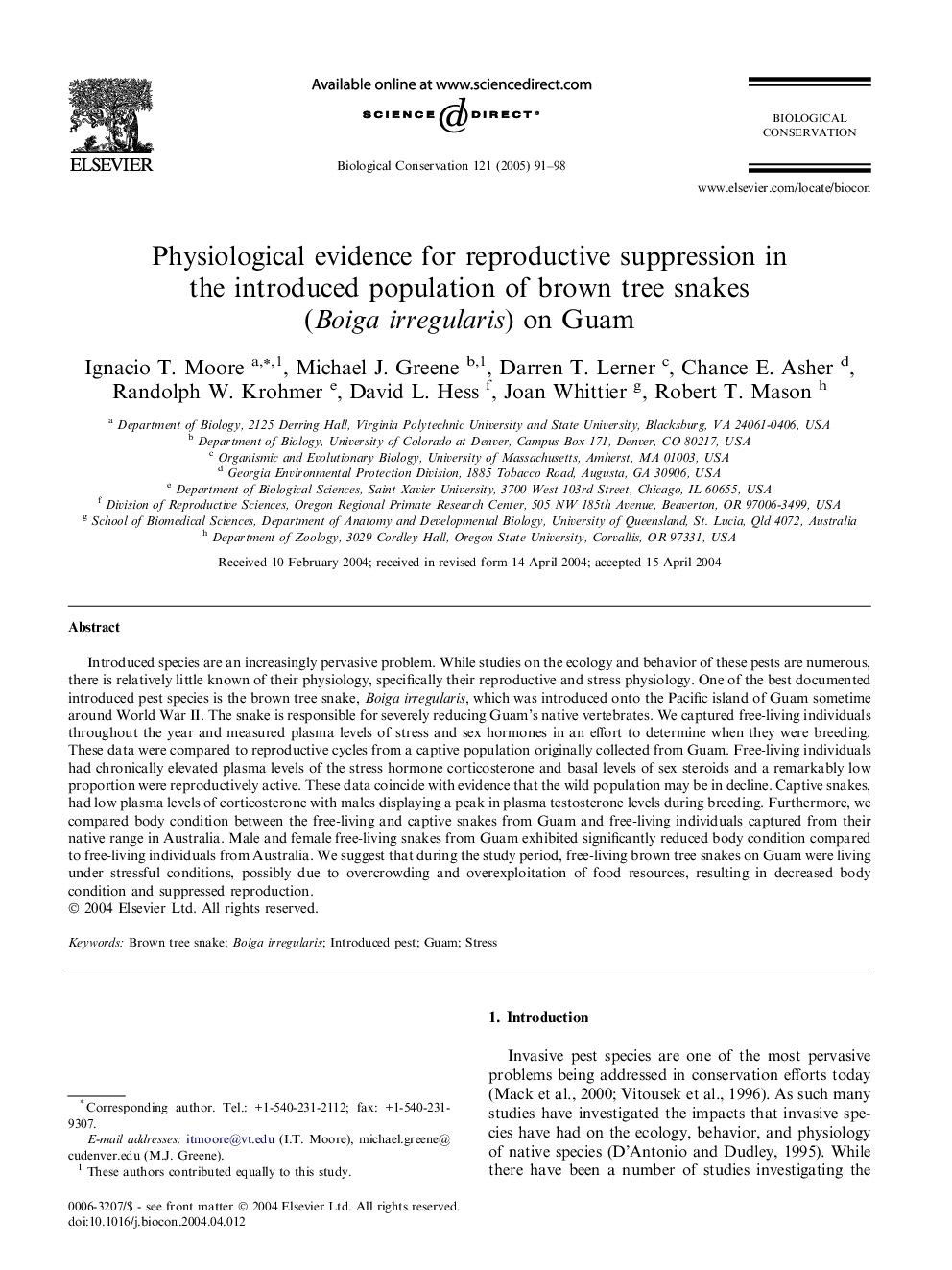| Article ID | Journal | Published Year | Pages | File Type |
|---|---|---|---|---|
| 9446121 | Biological Conservation | 2005 | 8 Pages |
Abstract
Introduced species are an increasingly pervasive problem. While studies on the ecology and behavior of these pests are numerous, there is relatively little known of their physiology, specifically their reproductive and stress physiology. One of the best documented introduced pest species is the brown tree snake, Boiga irregularis, which was introduced onto the Pacific island of Guam sometime around World War II. The snake is responsible for severely reducing Guam's native vertebrates. We captured free-living individuals throughout the year and measured plasma levels of stress and sex hormones in an effort to determine when they were breeding. These data were compared to reproductive cycles from a captive population originally collected from Guam. Free-living individuals had chronically elevated plasma levels of the stress hormone corticosterone and basal levels of sex steroids and a remarkably low proportion were reproductively active. These data coincide with evidence that the wild population may be in decline. Captive snakes, had low plasma levels of corticosterone with males displaying a peak in plasma testosterone levels during breeding. Furthermore, we compared body condition between the free-living and captive snakes from Guam and free-living individuals captured from their native range in Australia. Male and female free-living snakes from Guam exhibited significantly reduced body condition compared to free-living individuals from Australia. We suggest that during the study period, free-living brown tree snakes on Guam were living under stressful conditions, possibly due to overcrowding and overexploitation of food resources, resulting in decreased body condition and suppressed reproduction.
Related Topics
Life Sciences
Agricultural and Biological Sciences
Ecology, Evolution, Behavior and Systematics
Authors
Ignacio T Moore, Michael J Greene, Darren T Lerner, Chance E Asher, Randolph W Krohmer, David L Hess, Joan Whittier, Robert T Mason,
